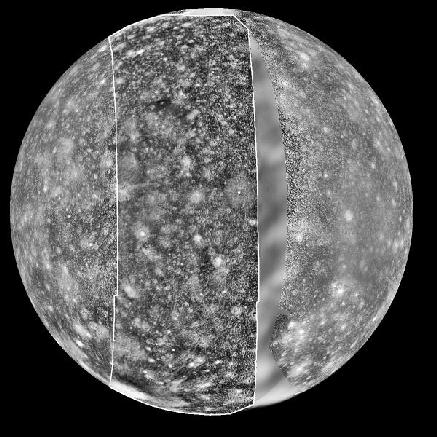Explanation: Callisto's surface shows its age. While probably formed at the same time as Io, the difference between the surfaces of these two moons of Jupiter could hardly be greater. Io's surface is young, shows practically no impact craters, and is continually being repaved by the lava exploding from its many large volcanoes. Callisto's surface is old, shows the highest density of impact craters in the Solar System, and harbors no volcanoes or even any large mountains. Callisto's surface is one large ice-field, laced with cracks and craters from billions of years of collisions with interplanetary debris. The high-resolution vertical band in the above mosaic was taken by the robot spacecraft Galileo currently orbiting Jupiter. The rest of the mosaic was compiled from pictures taken by the Voyager spacecraft which passed the Callisto in 1979.
1999 2000 2001 2002 2003 2004 2005 2006 2007 2008 2009 2010 2011 2012 2013 2014 2015 2016 2017 2018 2019 2020 2021 2022 2023 2024 2025 |
Yanvar' Fevral' Mart Aprel' Mai Iyun' Iyul' Avgust Sentyabr' Oktyabr' Noyabr' Dekabr' |
NASA Web Site Statements, Warnings, and Disclaimers
NASA Official: Jay Norris. Specific rights apply.
A service of: LHEA at NASA / GSFC
& Michigan Tech. U.
|
Publikacii s klyuchevymi slovami:
Callisto - udarnye kratery - Kallisto - galileevy sputniki
Publikacii so slovami: Callisto - udarnye kratery - Kallisto - galileevy sputniki | |
Sm. takzhe:
Vse publikacii na tu zhe temu >> | |
